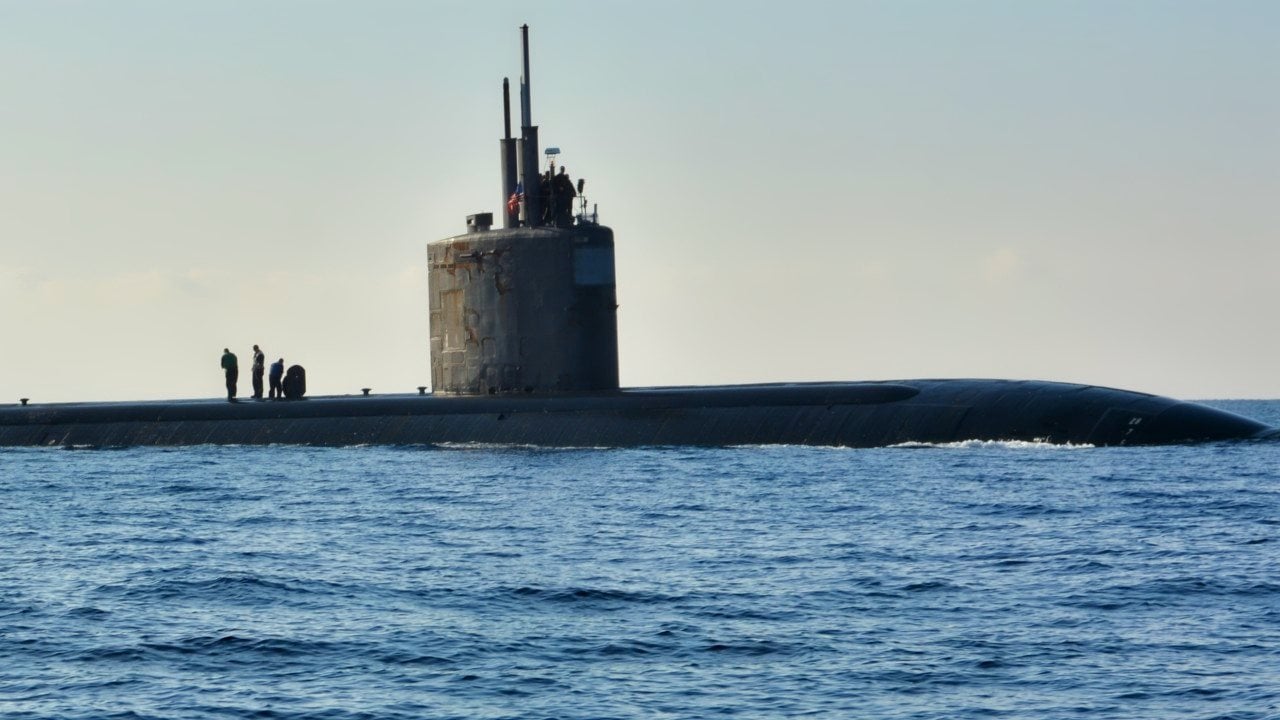Los Angeles-Class: This Might Be the Navy's Best Submarine Ever
The U.S. Navy's Los Angeles-class fast attack submarines were developed in response to the advancing Soviet submarine technology during the Cold War. Designed as successors to the Sturgeon-class, these submarines were larger, faster, and featured enhanced stealth capabilities
Summary and Key Points: The U.S. Navy's Los Angeles-class fast attack submarines were developed in response to the advancing Soviet submarine technology during the Cold War. Designed as successors to the Sturgeon-class, these submarines were larger, faster, and featured enhanced stealth capabilities.

-Equipped with advanced sensors, sonar, and a vertical launch missile system, the Los Angeles-class could engage in surface warfare, undersea warfare, and support carrier battle groups.
-Since their introduction in 1976, 62 of these submarines have been constructed, proving to be a highly successful platform for the U.S. Navy in various operational roles.
How the Los Angeles-Class Submarines Became a Cold War Powerhouse
The U.S. Navy’s Los Angeles-class fast attack submarines were a product of the intensifying Cold War arms race between America and the USSR.
During the 1960’s, the Soviets quickly developed more advanced submarine technology that threatened U.S. carrier battle groups.
Brand new Soviet fast attack vessels could penetrate a carrier’s destroyer screens.
At the same time, planners grew concerned that missile submarines could get close enough to launch a barrage large enough to overwhelm the battle group’s defenses.
To rectify this, U.S. engineers got to work to construct a new cutting-edge fast-attack submarine class.
The History of the Los Angeles-class
Designed as a successor to the Sturgeon-class submarines, the Los Angeles-class ships incorporated many of the same weapons and sensors when first introduced. However, the new class of submarines were roughly 50% larger than its predecessors with enhanced stealth and speed. The class’ capabilities include surface warfare, undersea warfare, mining operations, reconnaissance, special forces delivery, intelligence and carrier battle group support.
According to the U.S. Department of Defense, the Los Angeles-class ships could travel at speeds in excess of 25 knots. Some analysts predict the top speed of these vessels is actually much higher, however, this remains classified. All Los Angeles submarines are powered by the General Electric S6G pressurized water reactor. An emergency propulsion motor is also incorporated on the vessels.
Specs & capabilities:
The submarines in this class built after 1982 are fitted with a vertical launch missile system with 12 tubes. Each ship is equipped with a Raytheon CCS Mark 2 combat data system, which was replaced down the line with the Raytheon AN/BYG-1 Combat Control System. The Los Angeles submarines are also designed to launch Tomahawk cruise missiles and Harpoon missiles. The Gould Mark 48 torpedoes combat both high-performance surface ships and fast deep-diving submarines. As detailed by Naval Technology, “The torpedo is capable of operating with or without wire guidance and uses either or both active and passive homing. It is equipped with multiple re-attack modes which operate if the target ship is missed. The torpedo carries out programmed target search, acquisition and attack procedures.”
In terms of sonar, the Los Angeles ships were more advanced than earlier submarines when introduced to service. Each vessel is equipped with an array of sensors and sonars, including the AN/BQQ-5 sensor suite which gives the ships sonar capability. The AN-BBQ-5 was derived from the AN-BQQ-2 sonar system.

A total of 62 Los Angeles-class submarines have been constructed over the years, the majority being Flight I variants.
In 1976, the lead ship of the class USS Los Angeles was constructed, followed by Baton Rouge, Philadelphia, Memphis, Omaha, Cincinnati, Groton, Birmingham, New York City, Indianapolis, Bremerton, Jacksonville, Dallas, La Jolla, Phoenix, Boston, Baltimore, Corpus Christi, Alburquerque, Portsmouth, Minneapolis, Hyman G. Rickover, Augusta, San Francisco, Atlanta, Houston, Norfolk, Buffalo, Salt Lake City, Olympia and Honolulu.
Overall, the Los Angeles-class fast attack submarines have remained a highly successful platform for the U.S. Navy.
About the Author: Maya Carlin
Maya Carlin, National Security Writer with The National Interest, is an analyst with the Center for Security Policy and a former Anna Sobol Levy Fellow at IDC Herzliya in Israel. She has by-lines in many publications, including The National Interest, Jerusalem Post, and Times of Israel. You can follow her on Twitter: @MayaCarlin.
Image Credit: Creative Commons.


